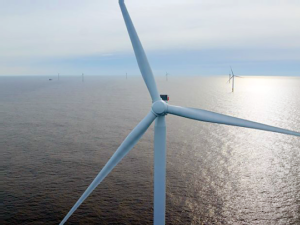Goldman Sees China’s Dash for Gas a Win for U.S. LNG Exporters
By: Dan Murtaugh | Dec 13 2017 at 03:10 AM | International Trade
China’s push for cleaner air will benefit giant industrial plants 12,000 kilometers (7,500 miles) away, according to Goldman Sachs Group Inc.
U.S. liquefied natural gas producers will be one of the primary beneficiaries of anti-smog policies that are boosting gas demand in China, Goldman analysts including Christian Lelong said in a Dec. 12 research note. Those plants, many along the U.S. Gulf Coast, are better positioned than European terminals to be the swing suppliers to Asia, and will have higher utilization because of the increased Chinese consumption.
The benefit to U.S. exporters is another ripple effect of China’s blue skies efforts, which have lifted natural gas demand in the country by 19 percent this year and are beginning to cause shortages as the need for winter heating increases. The policies, which are resulting in cleaner air quality, will lift imports of liquefied natural gas in 2020 by 25 percent versus previous forecasts, according to Goldman.
“U.S. exporters should be the primary beneficiaries of stronger Chinese demand,” Lelong said in the note. “China’s dash for gas should result in higher capacity utilization rates for U.S. facilities, particularly during the winter months.”
China will need to import about 15 million tons of LNG more than the previous forecast of 61 million by 2020, Lelong said. Several liquefaction plants are under construction on the U.S. Gulf Coast, intended to export excess shale gas production.
Chinese policies that are supporting gas use and restricting coal production capacity are helping lift the price of both commodities. Spot LNG in Singapore is up 12 percent from this time last year.
“This would leave China’s push for cleaner air as creating a cost to other global consumers, as gas typically sets the marginal cost for power,” Lelong said.










